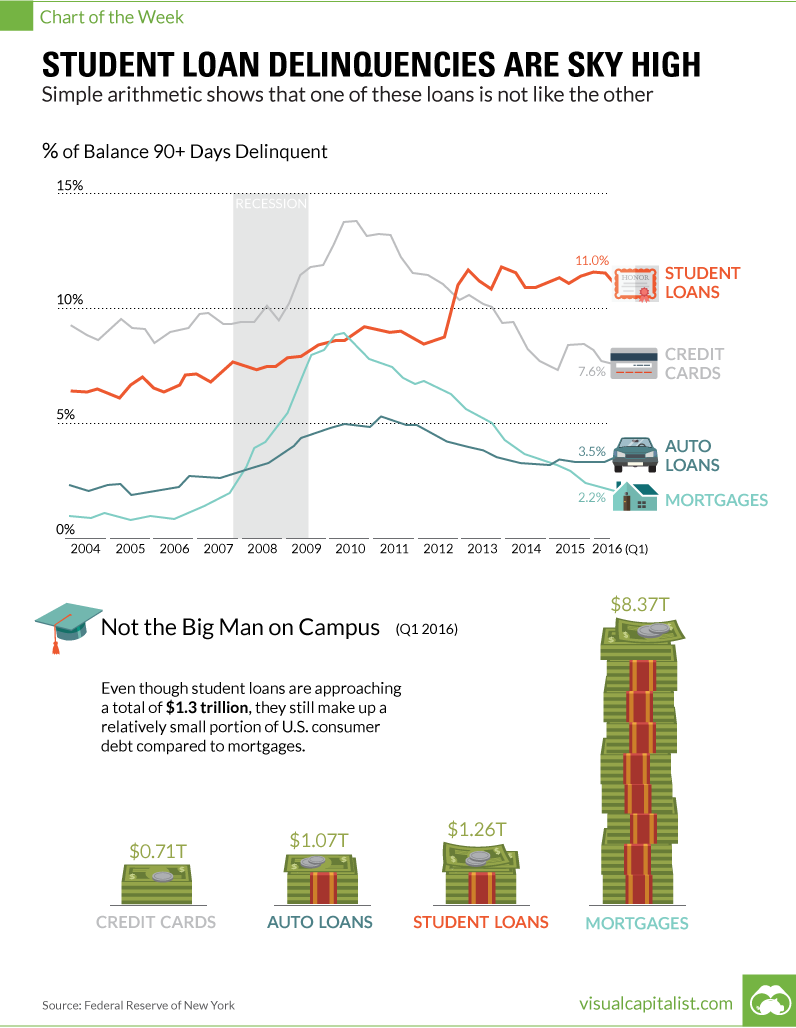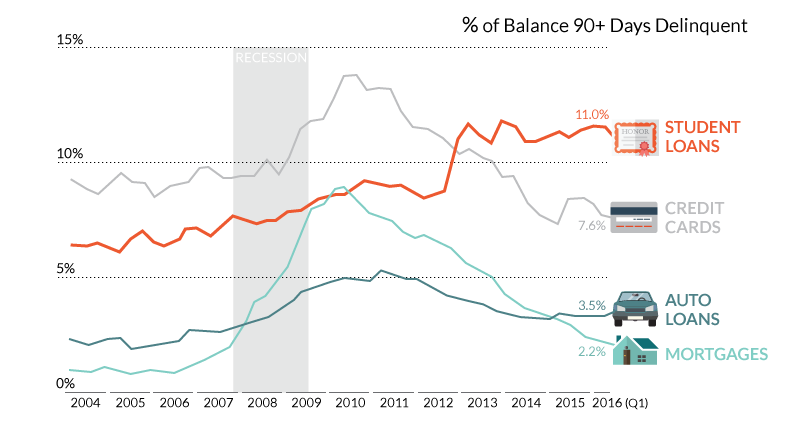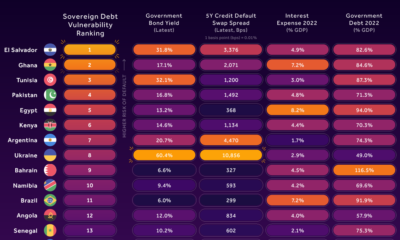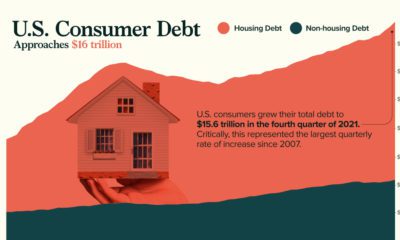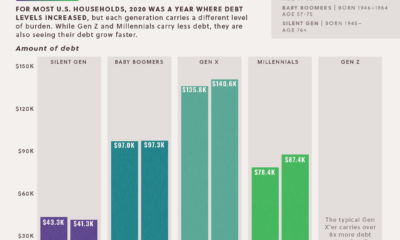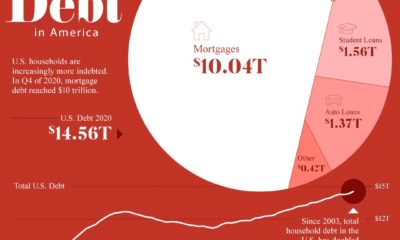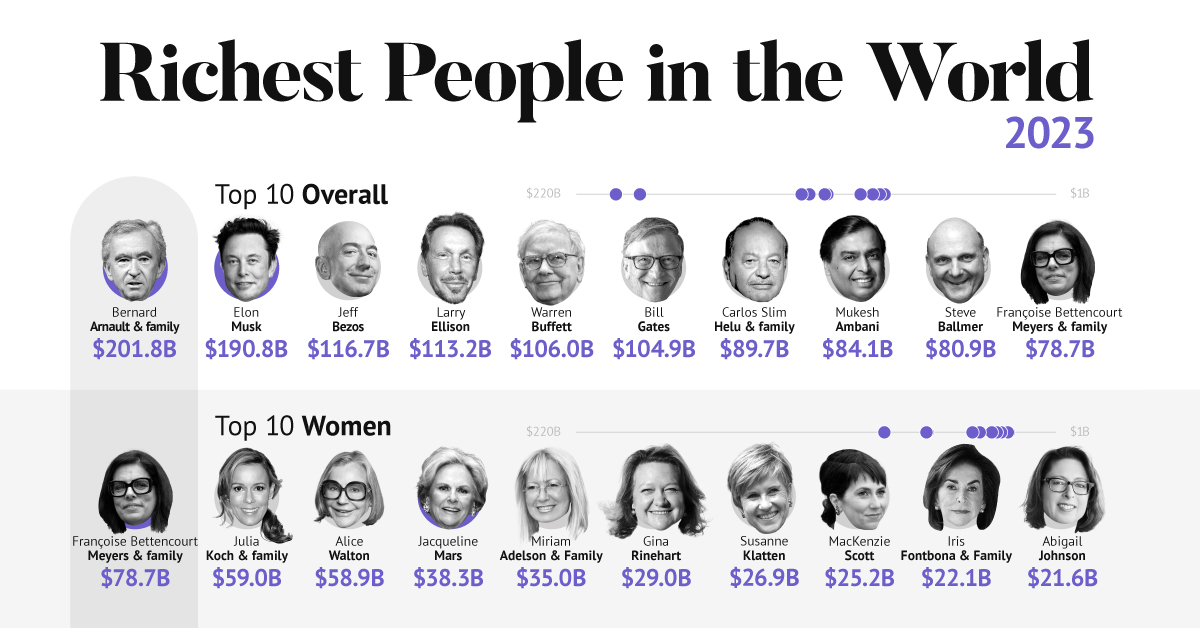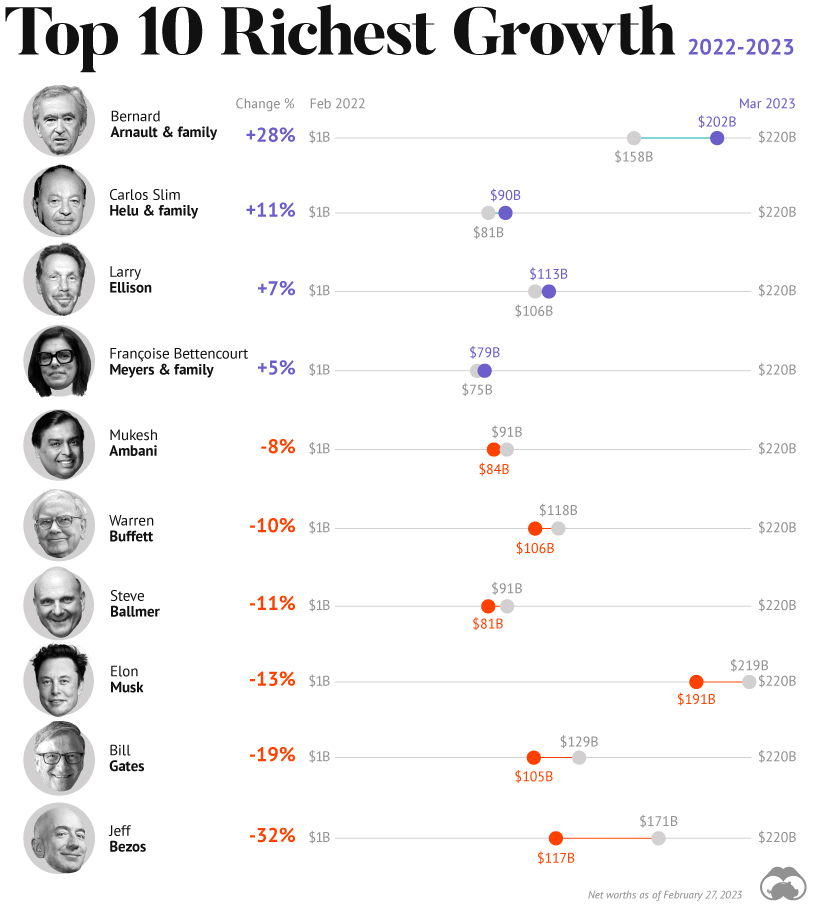Student Loan Delinquencies are Sky High [Chart]
Simple arithmetic shows one of these loans is not like the other
The Chart of the Week is a weekly Visual Capitalist feature on Fridays. What do you get when you combine skyrocketing tuition costs, a lack of growth in high-paying jobs, moral hazard, and America’s largest-ever generation of students? It’s a recipe for a mountain of $1.3 trillion in student loan debt – much of which is not being paid for.
Very Delinquent Students
With many students graduating with high debt loads, a growing number of students are becoming delinquent on their loans. The most recent estimate by the Federal Reserve Bank of New York estimates the percent of 90+ day delinquent loans to now be at 11.0%. This puts student loans at a higher delinquency rate than credit cards (7.6%), auto loans (3.5%), and mortgages (2.2%). It’s also particularly interesting because historically credit cards have had the highest rates among all types of consumer credit. Despite this, student loans “passed” credit cards in delinquency frequency at the end of 2012. Why are student loans the most troubled form of consumer debt right now? It’s the result of a clear mismatch between supply and demand for college-educated workers.
The Overeducation Bubble
Have college graduates been oversold on the prospects of a college degree? Or is the market for high-paying jobs not materializing as expected in the current low-growth economy? Either way, many college grads are punching below their weight in the job market. In a 2014 study, economists affiliated with the Federal Reserve Bank of New York found that up to 49% of recent college graduates aged 22 to 27 were working in careers that do not requite any college education. Based on this and other factors, renowned investor Peter Thiel has called higher education to be a bubble: He’s backed up his opinion with the Thiel Fellowship, a $100,000 grant for would-be students who want to “build something” rather than sit in a classroom.
Some Students Left Behind
A recent survey shows that many graduates are regretting their choices around student debt and education. Roughly 57% of millennials now say they regret how much they borrowed, and over one-third of respondents said they wouldn’t have gone to college if they knew the true price tag. Massive debt loads and the increasing student loan delinquency rate translate into real consequences for the economy. Many graduates are deferring having families or owning homes. One study even says that a modest student loan debt of $30,000 could cut $325,000 from a person’s 401(k) balance by retirement time. on A lagging stock market dented these fortunes against high interest rates, energy shocks, and economic uncertainty. But some of the world’s billionaires have flourished in this environment, posting sky-high revenues in spite of inflationary pressures. With data from Forbes Real-Time Billionaires List, we feature a snapshot of the richest people in the world in 2023.
Luxury Mogul Takes Top Spot
The world’s richest person is France’s Bernard Arnault, the chief executive of LVMH.
With 75 brands, the luxury conglomerate owns Louis Vuitton, Christian Dior, and Tiffany. LVMH traces back to 1985, when Arnault cut his first major deal with the company by acquiring Christian Dior, a firm that was struggling with bankruptcy.
Fast-forward to today, and the company is seeing record profits despite challenging market conditions. Louis Vuitton, for instance, has doubled its sales in four years.
In the table below, we show the world’s 10 richest people with data as of February 27, 2023:
Elon Musk, the second-wealthiest person in the world has a net worth of $191 billion. In October, Musk took over Twitter in a $44 billion dollar deal, which has drawn criticism from investors. Many say it’s a distraction from Musk’s work with Tesla.
While Tesla shares have rebounded—after falling roughly 70% in 2022—Musk’s wealth still sits about 13% lower than in March of last year.
Third on the list is Jeff Bezos, followed by Larry Ellison. The latter of the two, who founded Oracle, owns 98% of the Hawaiian island of Lanai which he bought in 2012 for $300 million.
Fifth on the list is Warren Buffett. In his annual letter to shareholders, he discussed how Berkshire Hathaway reported record operating profits despite economic headwinds. The company outperformed the S&P 500 Index by about 22% in 2022.
How Fortunes Have Changed
Given multiple economic crosscurrents, billionaire wealth has diverged over the last year. Since March 2022, just four of the top 10 richest in the world have seen their wealth increase. Two of these are European magnates, while Carlos Slim Helu runs the largest telecom firm in Latin America. In fact, a decade ago Slim was the richest person on the planet. Overall, as the tech sector saw dismal returns over the year, the top 10 tech billionaires lost almost $500 billion in combined wealth.
Recent Shakeups in Asia
Perhaps the most striking news for the world’s richest centers around Gautam Adani, formerly the richest person in Asia. In January, Hindenburg Research, a short-selling firm, released a report claiming that the Adani Group engaged in stock manipulation and fraud. Specifically, the alleged the firm used offshore accounts to launder money, artificially boost share prices, and hide losses. The Adani Group, which owns India’s largest ports—along with ports in Australia, Sri Lanka, and Israel—lost $100 billion in value in the span of a few weeks. Interestingly, very few Indian mutual funds hold significant shares in Adani Group, signaling a lack of confidence across India’s market, which was also cited in Hindenburg’s report. As a result, Mukesh Ambani has climbed to Asia’s top spot, controlling a $84 billion empire that spans from oil and gas and renewable energy to telecom. His conglomerate, Reliance Industries is the largest company by market cap in India.
